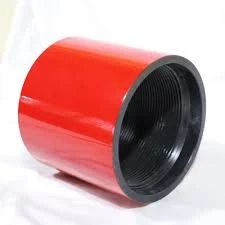- Afrikaans
- Albanian
- Amharic
- Arabic
- Armenian
- Azerbaijani
- Basque
- Belarusian
- Bengali
- Bosnian
- Bulgarian
- Catalan
- Cebuano
- Corsican
- Croatian
- Czech
- Danish
- Dutch
- English
- Esperanto
- Estonian
- Finnish
- French
- Frisian
- Galician
- Georgian
- German
- Greek
- Gujarati
- Haitian Creole
- hausa
- hawaiian
- Hebrew
- Hindi
- Miao
- Hungarian
- Icelandic
- igbo
- Indonesian
- irish
- Italian
- Japanese
- Javanese
- Kannada
- kazakh
- Khmer
- Rwandese
- Korean
- Kurdish
- Kyrgyz
- Lao
- Latin
- Latvian
- Lithuanian
- Luxembourgish
- Macedonian
- Malgashi
- Malay
- Malayalam
- Maltese
- Maori
- Marathi
- Mongolian
- Myanmar
- Nepali
- Norwegian
- Norwegian
- Occitan
- Pashto
- Persian
- Polish
- Portuguese
- Punjabi
- Romanian
- Russian
- Samoan
- Scottish Gaelic
- Serbian
- Sesotho
- Shona
- Sindhi
- Sinhala
- Slovak
- Slovenian
- Somali
- Spanish
- Sundanese
- Swahili
- Swedish
- Tagalog
- Tajik
- Tamil
- Tatar
- Telugu
- Thai
- Turkish
- Turkmen
- Ukrainian
- Urdu
- Uighur
- Uzbek
- Vietnamese
- Welsh
- Bantu
- Yiddish
- Yoruba
- Zulu
bull plug pressure rating
Understanding Bull Plug Pressure Ratings A Comprehensive Overview
In the realm of industrial applications, particularly in oil and gas, fluid dynamics play a vital role in maintaining safety and efficiency. One of the essential components in this sector is the bull plug, commonly used to seal pipe ends when operations need to be interrupted or when systems are being serviced. However, an integral aspect that must not be overlooked in the utilization of bull plugs is their pressure rating. Understanding bull plug pressure ratings is crucial for ensuring safety and operational integrity in pressure-containing systems.
What is a Bull Plug?
A bull plug, often referred to as a pipe plug or threaded plug, is designed to close the end of a pipeline or vessel. Typically made from materials like steel, stainless steel, or plastic, bull plugs come in various sizes and pressure ratings. They serve not only to prevent the escape of fluids but also to ensure that systems can withstand the pressures exerted during operation.
Importance of Pressure Ratings
The pressure rating of a bull plug indicates the maximum pressure the plug can withstand without failing. This information is critical as exceeding this rating can lead to catastrophic failures, including leaks, burst plugs, and even explosions in extreme cases. Various factors influence pressure ratings, including the material of the plug, the nature of the service (i.e., temperature and corrosiveness of the fluids), and the specific industry standards that must be adhered to.
Industry Standards
Several organizations establish pressure standards for components like bull plugs. These include the American National Standards Institute (ANSI), the American Society of Mechanical Engineers (ASME), and the American Petroleum Institute (API). Each organization provides specific guidelines regarding materials, design, and testing methods. For instance, plugs rated to higher pressures will often undergo rigorous testing to ensure their reliability under extreme conditions.
Material Considerations
bull plug pressure rating

The choice of material greatly affects the pressure rating of a bull plug
. Common materials include- Carbon Steel Versatile and cost-effective, but can be susceptible to corrosion if not properly treated. - Stainless Steel Offers enhanced corrosion resistance and higher pressure ratings, making it suitable for harsh environments. - Plastic While lightweight and resistant to corrosion, plastic bull plugs typically have lower pressure ratings compared to metal counterparts.
When selecting a bull plug, it's essential to consider both the material and the service environment to ensure compatibility and reliability.
Calculation of Pressure Ratings
The pressure rating of a bull plug is determined through a combination of empirical testing and calculations based on the material properties. Manufacturers often provide specifications that include the maximum allowable working pressure (MAWP) along with the temperature rating. It's crucial for engineers to consider both factors when designing a system to avoid potential hazards.
Application in the Industry
In practical applications, bull plugs are used in various scenarios, such as during pipeline maintenance, when temporary seals are needed, or in testing environments where system integrity must be verified. For instance, during pressure testing of a new pipeline, bull plugs are essential to contain the test fluid and ensure accurate pressure readings.
Conclusion
In summary, understanding bull plug pressure ratings is critical for ensuring the safe and efficient function of pressure systems in industrial applications. By considering the material properties, compliance with industry standards, and proper installation techniques, operators can significantly reduce the risk of failure. Whether for temporary sealing during maintenance or integral to everyday operations, the importance of pressure ratings cannot be overstated. Properly rated bull plugs are not just components; they are essential safeguards that protect both personnel and equipment in high-pressure environments.
-
Tubing Pup Joints: Essential Components for Oil and Gas OperationsNewsJul.10,2025
-
Pup Joints: Essential Components for Reliable Drilling OperationsNewsJul.10,2025
-
Pipe Couplings: Connecting Your World EfficientlyNewsJul.10,2025
-
Mastering Oilfield Operations with Quality Tubing and CasingNewsJul.10,2025
-
High-Quality Casing Couplings for Every NeedNewsJul.10,2025
-
Boost Your Drilling Efficiency with Premium Crossover Tools & Seating NipplesNewsJul.10,2025







